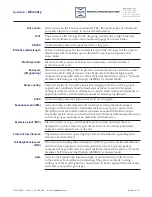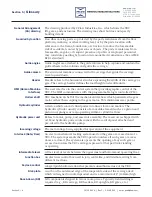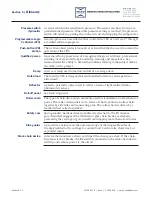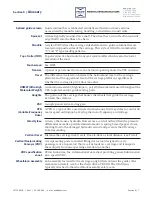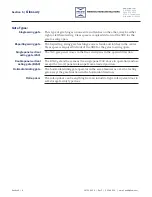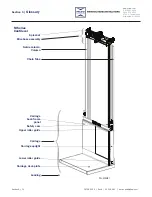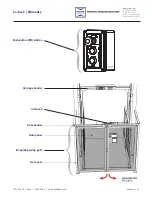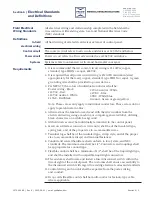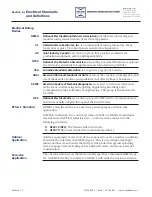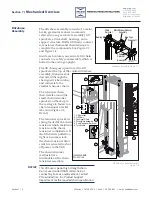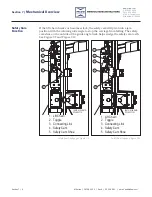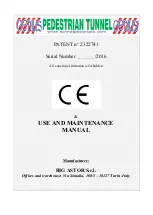
_5HY&__HPDLOSVG#SÁRZFRP
6HFWLRQ_
Section 5 |
Glossary
www.pflow.com
P 414 352 9000
F 414 352 9002
6720 N. Teutonia Ave.
Milwaukee, WI 53209
A permanent-working surface at a fixed elevation used for loading or unloading
the carriage.
A chain that lifts the carriage and load.
Illuminated push button that indicates at which level the carriage is located.
The total weight that the VRC is designed to lift at a specific speed. Typically, this
is the dead load plus live load (see Rated load).
An electrical device which is used to control the carriage position and monitor
various mechanical devices.
A method to describe the direction a load can be moved on and off a carriage at
different operating floors or levels. These can be used in combinations.
z
“C” load pattern:
Carriage configuration allowing a load/unload opening on
one side of the carriage deck.
z
“Z” load pattern:
Carriage configuration allowing a load/unload opening on
opposite sides of carriage deck.
z
“90 degree” load pattern:
Carriage configuration allowing a load/unload
openings at right angles on the carriage deck.
The carriage is loaded to rated capacity, and the lift is operated.
Macropoxy is a fast drying, polyamide epoxy designed to protect steel in
industrial exposures. Ideal for protection of sharp edges, corners, and welds.
A mechanical means of stopping travel at a fixed position.
A push button which only has to be pressed for an instant to activate the desired
operation.
The side(s) of a carriage not used for loading/unloading. Handrails or expanded
metal sides and kick plate are normally supplied as minimum guarding.
The side(s) of the carriage used for loading/unloading. At a minimum the side(s)
are normally equipped with a safety chain as guarding.
The outside dimension of the carriage structure or the entire lift.
A safety device provided on mechanical VRCs to stop carriage travel beyond the
uppermost or lowermost floor level if the floor level positioning limit switch fails.
Photoelectric sensor that uses a focused beam of light to span the distance to a
reflector. The VRC controls receive a signal when the reflected beam of light is
detected by a sensor.
A depression in the floor a minimum of 1" (25mm) deeper than the carriage
profile, which allows the carriage deck to be flush at operating floor or level.
The structure that forms the floor of the carriage and that directly supports the
load (see Deck).
A device that requires in-plant, clean and dry air to automatically open and close
a gate. The device can be operated by either manually through the use of pull
cords or push buttons, or automatically through the use of a PLC.
Landing
Lift chain
Lift location light
Lifted load
Limit switch
Load pattern
Load test
Macropoxy
Mechanical stop
Momentary contact
push button
Non-operating end
Operating end
Overall dimension
Overtravel limit
switch
Photo eye
Pit
Platform
Pneumatic gate
operator













